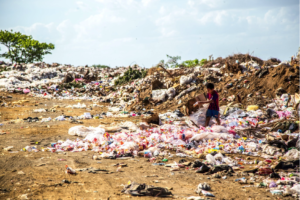Blog
How Can Climate Change Education Help Achieve Sustainable Development?
Written by Dhvani Sukhadia
July 25, 2019
Human activity is rapidly causing permanent change to the Earth’s climate. However, improving education on climate change is an effective way to combat this issue.
What is Climate Change Education (CCE)?
Small changes to the Earth’s climate are a natural occurrence. Yet, the planet is presently warming at an unprecedented rate due to human activity. High levels of greenhouse gas emissions in the atmosphere has led to shrinking ice sheets in Greenland, which could contribute to rising sea levels, and trigger mass migration.
The aim of climate change education (CCE) is to impart knowledge about climate change. People are also taught how to cope with its effects.
Sustainable Development Goal 4.7 includes the integration of Education for Sustainable Development (ESD) into national curriculums and education policies worldwide. ESD takes CCE a step further by aiming to foster a sense of responsibility for the planet among learners. Further, it empowers them to take action for a more sustainable world by following its core principles, which include systemic thinking and collaborative decision-making.
Low Awareness around Climate Change
According to Tien Ming Lee & co’s research, there are low levels of knowledge about climate change worldwide. The study suggests that nearly one-third of surveyed adults were completely unaware of climate change. Moreover, awareness is low in developing countries. For instance, only 25 percent of respondents in Egypt knew what climate change was.
Humanity cannot adapt to or mitigate climate change if only certain people have access to information. The gravity of this challenge requires effort from everyone at all levels of society.
What are the benefits of CCE?
The education sector is an overlooked opportunity to bring about real and sustained change in our fight against global warming. A recent study indicates that CCE helps to reduce vulnerability to climate change related disasters, as it equips students with the relevant skills and knowledge to do so. Plus, it could save developing countries $100 billion a year, which is the amount estimated for developing countries to adapt to climate change.
CCE is vital to tackling rapid global warming. Education leads to informed decision-making, and improves communities’ capacity to mitigate and adapt to the effects of climate change. Moreover, CCE could help people develop skills to prepare for natural disasters. In Haiti, Cuba, and the Dominican Republic, studies have shown that well-educated people responded quickly to hurricane warnings and recovered from the storms faster, too.
Role of Media
Numerous national governments including Kenya and Costa Rica have implemented CCE for their school-going populations. Yet awareness among adults remains lacking. Media publications could be a useful tool, as regular reporting on environmental issues could help cultivate awareness among adults about the urgent need to reduce greenhouse gas emissions.
However topical the problem, news about climate change can be confusing and uninteresting sometimes. Moreover, climate change’s effects occur gradually, making them less sensational and ‘newsworthy’ compared to other events. Journalists could engage a broader audience in these issues by framing climate issues around human stories and showcasing the development of solutions.
Approaches to CCE
Traditionally, CCE has meant climate literacy and environmental education within science classes in schools and colleges. However, this is an extremely narrow approach. When teaching about sustainable lifestyles and climate change, it is important to consider the institutional environment in which CCE is taught. The education infrastructure itself should be resilient and environment-friendly to make CCE comprehensive and multidisciplinary. More holistic approaches to CCE include Education for Sustainable Development (ESD) and Quality Learning Agenda. The Fundación Granja Ecológica el Porvenir in Colombia is a good example of ESD. This organisation operates a farm and museum to raise awareness about local resources and the nearby tropical cloud forest. Its programmes have benefited millions, and the organisation has restored 12,000 square metres of the forest.
The United Nations Educational, Scientific, and Cultural Organisation (UNESCO) began promoting ESD in 1992 and set up the Global Action Programme in 2014 to implement ESD at a faster pace. It includes 147 partner countries. Between 2015 and 2018, the programme reached millions of people in countries including India, China, and forty African countries. While they have made good progress, there is still room for improvement.
For ESD to flourish, the international community should continue the work already underway through long-term policy measures. Moreover, NGOs and the private sector could support ESD implementation. Finally, CCE should aim at transformation of behaviour that leads to action both inside and out of the classroom. This way, education can positively contribute to climate change mitigation.
Dhvani Sukhadia is currently completing an MSc in Development Studies at SOAS University of London.

